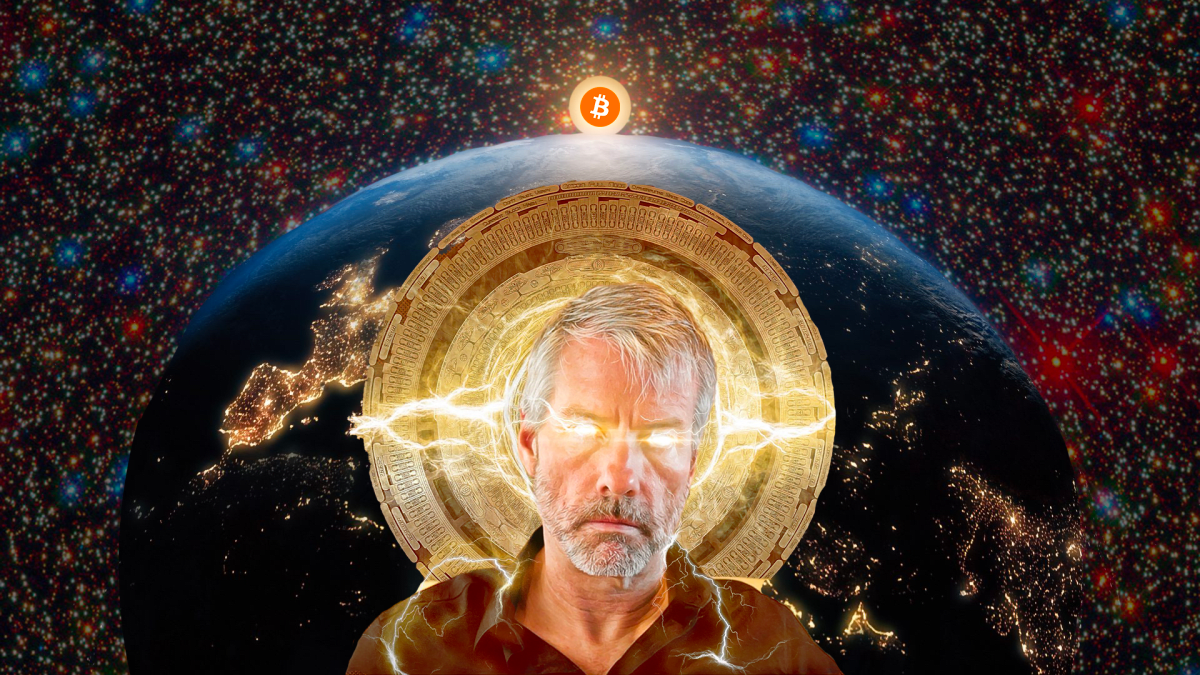Living On Bitcoin Day 2: Being “Unbanked” Has Been Easy … But Also Hard

This is the second instalment of reporter Colin Harper’s “Living on Bitcoin” experience in San Francisco. Find out what happened to him on Day 1 here.
I woke up on Christian’s couch stiff-necked and cotton-mouthed. A bit more fitting for the “living on internet money” survival vibe, yeah?
A friend of a friend of Christian’s roommates (who are starting a business and moving to LA today) was out cold on an air mattress next to a stripped Christmas tree, snoring into the streams of soon-after-sunrise light filtering through the window. Another blow-up mattress adjacent to the couch was vacant. Its former occupant, Julian Martinez, a copywriter at Quantstamp and Christian’s friend, had left early in the morning, politely folding his sheets before he left.
I trundled into the kitchen in search of coffee. Christian and his housemates grind their coffee and use a french press, which seemed rightly authentic for San Francisco. The Philz whole coffee beans were stashed in a cupboard along with some almond flour (also on point), spices and other ostensibly hipster culinary staples.
Christian came in and we prepped the press. Sitting down for a cup in the dining area, the view from his apartment window seat offered up a gorgeous morning landscape of the residential area with the bay at its back.
As he and his girlfriend left to pick up breakfast, I was confronted with the task of condensing the whole of yesterday’s events. In the flurry the day had become, I recorded the experience in scatterings between my phone, laptop and journal, typing or jotting whenever I had the time or inspiration struck. The words were distributed. It was just a matter of pulling them together and making them fit.
So most of Saturday was spent reconciling how to pare down the experience (2,900 words later, I didn’t do a very good job). Christian and his girlfriend brought me back a croque madame from a local bakery and the San Franciscan sourdough lived up to its reputation. I wouldn’t wrap up the first draft until probably 6:00 p.m. that night.
Of course, there were interruptions (like eating) that involved my careful attention and purchase planning. I still hadn’t done a point-of-sale (PoS) with bitcoin, and I thought I would have the opportunity at lunch with Curry Up Now.
The once-foodtruck, now-local chain has become a sensation with its uncanny Indian-Mex and world food fusion fare. Chicken tikka masala burritos, deconstructed samosas and aloo gobi tacos coexist with Indian street food, pub food with a curried twist and even fried ravioli with masala dip.
At one point in time, they accepted bitcoin, and most resources (like coinmap.org) indicated as much. But when I called to confirm, a hurried employee shot down my hopes.
“No, I’m sorry we don’t,” she said, a bit short and stressed, with the commotion of a popular restaurant audible in the background.
Hanging up, I hoped it wasn’t an omen for the other restaurants I was planning to call.
Bummed as I was not to get to buy direct, the menu left me salivating so I ordered a tikka masala burrito with Uber Eats using my Bitrefill-bought Uber credit.
Amazingly, when it arrived, I managed to lock myself out of Christian’s apartment while he, his girlfriend and a future roommate went to lunch. At least I had food and rooftop access.
I took the mishap as an excuse to take a break from writing and go enjoy the view on the roof. Up top, I tore into my burrito (which is a divinely inspired culinary design, I’m convinced) and surveyed the vibrant view of a lazy Saturday.
I wasn’t too concerned by the lockening, mainly because I knew Christian and friends would be home shortly. Plus my phone had a healthy charge so I could get somewhere if I needed to, though my BRD wallet had been a glitchy cause for concern. But I wasn’t going to starve while they were gone, so locking myself out was more of a dunce-cap moment than a shot in the foot.
They got home when I was halfway through with my burrito. Great when life works out like that (sucks when it doesn’t though). Like the way transportation was panning out — and not just for me.
Running around in Ubers all week is going to beat up my wallet pretty good and already has. Christian offered to mitigate the problem by renting me his bike, so when he got back he took me to the house’s garage to dig it out.
When he opened the door, there was a pile of bikes chained together, none of which belonged to Christian’s house. They belonged to his neighbors, but their bikes were gone. Earlier, Christian had been griping about his roommate Matt leaving the cover off the rooftop grill — looks like he might have forgotten to lock up the bikes (and the garage), too. I wasn’t the only one with bike woes.
Sucks when it doesn’t though.
If I can buy a bike with bitcoin while I’m here, I intend to donate it to Christian’s house — a gesture of good faith for letting me shack up.
Maybe that will be my first IRL transaction in this tech city.
I stayed in the rest of the day, in part to write but also because there wasn’t much of a reason to go anywhere. If I needed food, I could order through Uber Eats. In fact I would have to, because day 2 was the day that I realized that most all of the places that used to accept bitcoin in 2013-14 no longer did. Almost all of the places I researched were either gone or had stopped taking crypto a while ago.
Hill tried to warn me, saying many of the places she visited were now out of business. The Cups & Cakes Bakery that garnered international media attention for being one of the first businesses to accept bitcoin, the sushi joint where she took the San Francisco bitcoin community out to dinner — both were gone. I’ve searched for the Buyer’s Best Friend grocery store, whose owner was inspired to take bitcoin after reading Hill’s series, but, as far as I know, its physical locations have vanished. Google suggests that there’s a delivery service that you can use, but the company’s website just redirects me to a 404 page.
I assured Hill that I had found other alternatives, some of which might have sprung up after her experiment. One by one, a series of disappointing phone calls discredited all of my research. All of the places that used to accept bitcoin no longer do. Some that I found on the resources I used (coinmap.org and finder.com) weren’t even in business anymore.
My fear after calling Curry Up Now was being confirmed. Apparently, the restaurant’s rejection of the cryptocurrency had been the unfortunate portent of a trend of restaurants that formerly accepted bitcoin but don’t anymore.
My expectations had been completely thwarted. There are fewer storefronts and restaurants that accept bitcoin now than there were in 2013-14. So far, Uber credit has been keeping me afloat. I had yet to actually completely an in-person transaction for anything (except for when I paid Christian for dinner but that doesn’t really count). The thought of it made me realize that I didn’t even need to be in San Francisco to do the experiment. I could have been back home — I could have been anywhere.
That frustrated and fascinated me. So long as I had internet, I could buy gift cards from Bitrefill and Paxful and credit to eat/travel/sleep. I could buy just about anything a traveler would need: flights, hotel rooms, and gift cards for food and groceries. If I really needed to, I could even subsist on the cheapest, most ubiquitous fast food, like buying McDonald’s gift cards to eat in the farthest corners of the world. There’s Subway, too, and other chains you’d find just about anywhere.
These services work even if you’re unbanked, something that was touched on in a podcast episode I had with Christian that night for POV Crypto. Speaking to the experience so far, I mentioned the trend of restaurants either no longer accepting bitcoin or going out of business after accepting it (whatever that represents).
“Sounds like you’re having to use a lot of infrastructure to survive,” he said in reference to how Bitrefill and Paxful have helped me out. “Which is still cool because even if you’re unbanked, you can use bitcoin to live.”
And he’s right about that. Even if I haven’t (and maybe can’t) pay merchants directly, bitcoin is still fulfilling its use case as a decentralized payment method. At once, it makes it difficult to survive on it in the physical world, but simultaneously, it makes it easy to survive online.
It’s either too easy or too impossible.
The rest of the night was filled with dinner, paid for by one of our coworkers, John Riggins. When I asked Riggins for his wallet address, he didn’t respond.
After grub, we (Christian, his girlfriend Michelle, Riggins and I) all sat down for a game of Catan. A trading game involving resource cards that represent imaginary wheat, lumber, ore and cattle really gives you perspective when you try to live on internet money.
It made me think that, even in the worst case, maybe I could barter my way along. Or that, just like the shifting economics of the game, when certain resource cards would become more valuable depending on situation or player, it made me think: Someone will eventually come along who will take my bitcoin for food or a service or anything, right?
I’m going to get out and about to really see for sure the next day.
This article originally appeared on Bitcoin Magazine.









